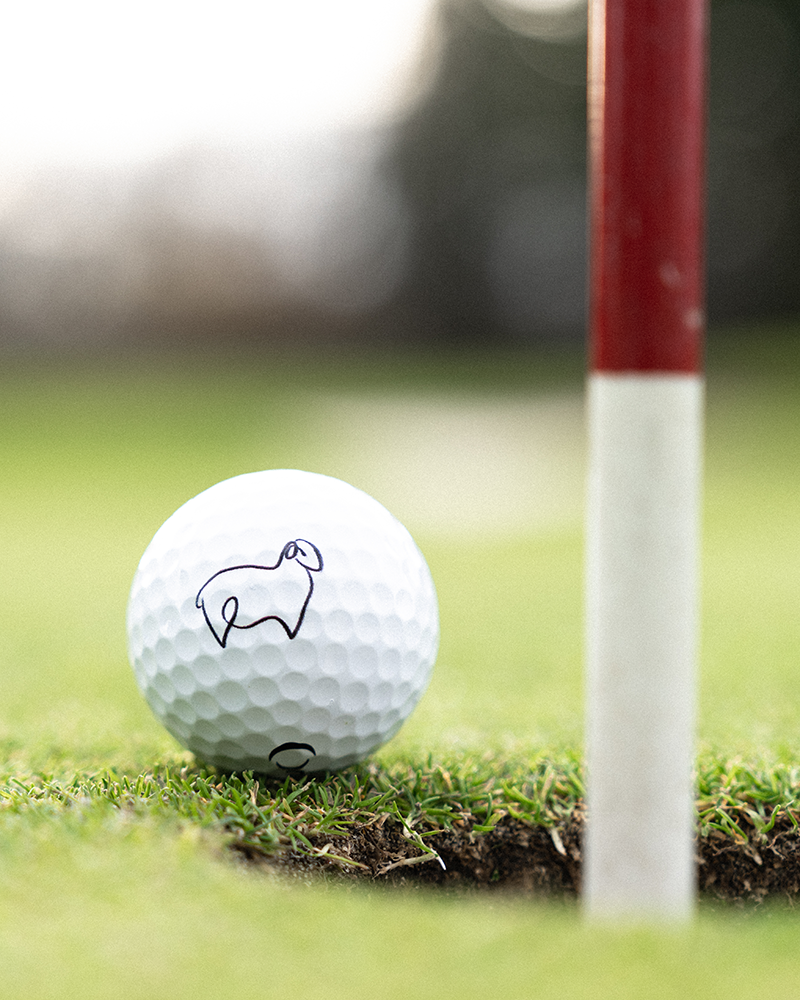
Women, like men, face an overwhelming number of options when it comes to golf balls. They’re also the game’s fastest-growing player segment, so every major manufacturer designs balls specifically aimed at their performance profiles and aesthetic preferences.
But for women and men alike, ball selection can be simplified by asking a few basic questions. Do you need more distance? More accuracy? More control around the greens? Less rollout on chip and pitch shots? Once you have your answers, it’s time to start doing your homework. Here are four tips for finding the right fit for your game.

1. Affordability
It’s not performance-related, per se, but let’s address budget out of the gate. On average, women who play recreationally log fewer 18-hole rounds annually than men (source: National Golf Foundation). They’re often more pragmatic and don’t want to break the bank to stock their bags with golf balls.
For the most part, this problem solves itself. Why? Here’s the simple explanation: the average female golfer plays (or should play) a soft, low-compression golf ball. This type of ball is usually constructed of two pieces, a cover and a core. Take OnCore’s AVANT 55, for example. It features a super-soft Surlyn cover with a 392-dimple pattern and a large, soft inner core with added perimeter weighting.
Because two-piece balls are easier to make, they’re less expensive and usually run between $15 to $25 a dozen. A dozen Srixon Soft Lady Feel balls are $19.99 as are TaylorMade’s Ladies Kalea balls. A dozen AVANT 55s retail for $19.99, but OnCore rewards members who can save 10, 20 or even 25% depending on their loyalty level.
2. Performance
According to the United States Golf Association’s (USGA) Distance Report, the average mid- to high-handicap female golfer drives the ball 146 yards. Women with handicaps of six and under get it out there quite a bit farther, at 195 yards. But suffice it to say, most women would gladly accept more distance off the tee.
So how do you go about getting it?
Distance is a result of several different variables including, but not limited to, clubhead speed, ball speed, spin rate, launch angle and smash factor. Golf ball fitting is predicated mainly on clubhead speed. On average, women’s driver swing speeds are below 60 mph compared to 75 and over for men. LPGA Tour players like Nelly Korda and Brooke Henderson can top 100 mph. But we digress.
Because women have lower swing speeds, they’re not able to compress multi-layer balls like OnCore’s ELIXR and VERO X1, with higher compression ratings in the 80s and 90s. Two-piece balls, by design, have lower compression ratings in the 50 to 60 range (AVANT 55 is, you guessed it, 55). Women can better compress a two-piece ball throughout their club set, which helps the ball spin less and fly straighter. In addition, two-piece balls tend to launch higher at slower swing speeds, which is another distance aid.
The result? More distance. And for women with higher swing speeds (over 75 mph), a three-piece ball like OnCore’s ELIXR can provide additional distance on driver and iron shots, and more control around the greens.

3. Personalization
Women’s golf ball lines feature more cover color and custom pattern options than men’s balls. Manufacturers realize that personalization (and even a little pizzaz) is important for female players, who, according to surveys by the NGF and PGA of America, often view golf as a social activity. AVANT 55 is available in white, matte green and yellow. Like any OnCore ball, logos, messaging or graphics can be added via a simple, three-step customization process at check out.
4. Availability
What are women’s purchasing habits like when it comes to golf balls? Some rely on their significant others to keep their bag stocked, while others will grab a dozen at whatever big box store they frequent. According to a handful of female private club general managers and PGA professionals we spoke with, most female members buy whatever ball the golf shop stocks. They are less likely than men to order online through the burgeoning direct-to-consumer brand (DTC) channel.
DTC is the fastest-growing sales channel in the golf ball category. According to Golf Datatech, 66% of golf ball sales were made online in 2021. This tops online clubs, shoes, and apparel sales, and it could reach 70% by the end of 2022. Convenience and saving money are two driving factors in this trend. As a DTC brand, OnCore offers premium balls at a lower price point while shipping directly to golfers’ front doors (with free shipping on purchases over $100).
More women shop online than men (72% compared to 68% according to OptinMonster), so look for more and more women to hop online to score their next dozen!
Ready to find the perfect OnCore ball for your game? Take the next step with our Ball Fitting Assessment and receive 10% off your first purchase.






